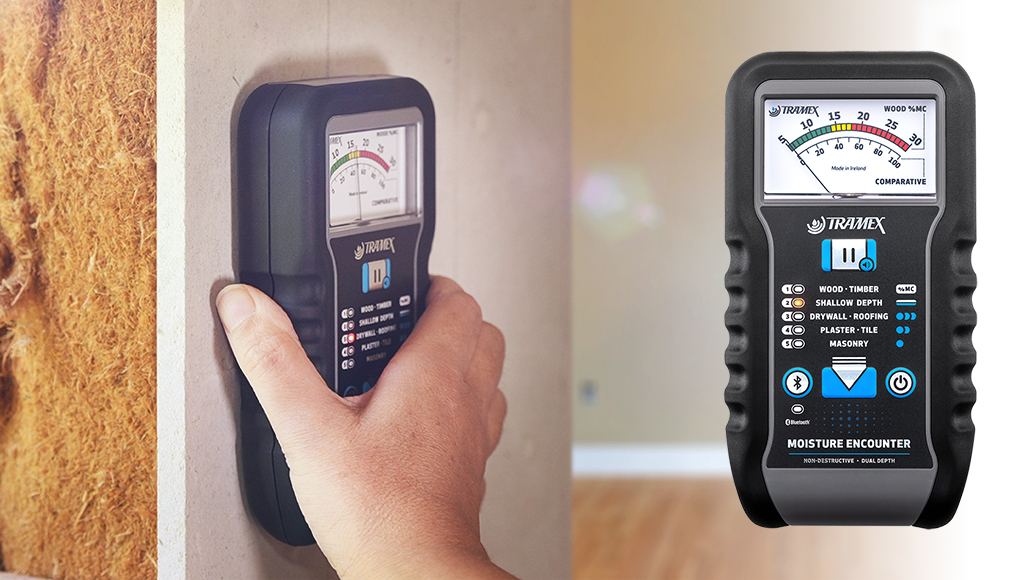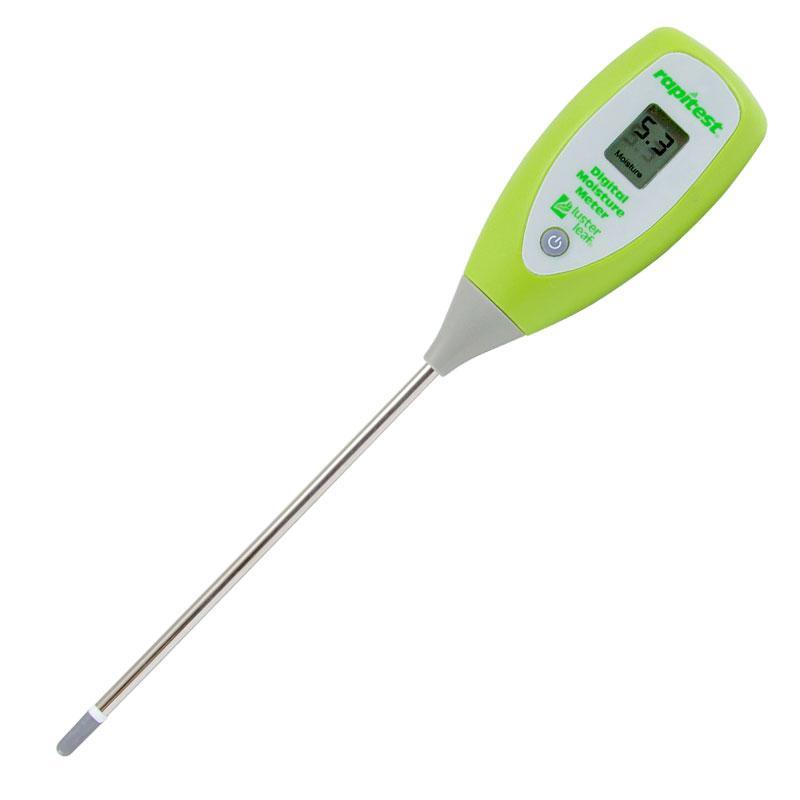Comprehending the Different Types of Moisture Meters and Their Applications
Comprehending the Different Types of Moisture Meters and Their Applications
Blog Article
Explore the World of Moisture Meters: Every Little Thing You Required to Know
In the realm of moisture meters exists a globe of precision and usefulness that frequently goes unnoticed. These tools, while relatively straightforward, hold a wide range of info that can considerably impact numerous sectors and applications. Comprehending how moisture meters run, the different kinds offered, and their diverse uses can shed light on their relevance in making certain quality and performance. By checking out the intricacies of wetness meters, one can uncover a useful tool that goes beyond mere measurement, using insights that can make a significant difference in many areas.
Exactly How Moisture Meters Work
Moisture meters run by measuring the electrical conductivity or capacitance of materials to establish the moisture material existing. These meters are very useful tools across different sectors, consisting of woodworking, construction, and agriculture. By utilizing different techniques such as pinless or pin-type modern technology, dampness meters give exact analyses that aid experts make educated choices.
Pin-type moisture meters work by inserting the sharp pins into the material being tested. The electrical conductivity between the pins is after that determined, with greater wetness degrees causing boosted conductivity. Moisture Meter. On the various other hand, pinless wetness meters utilize electromagnetic signals to scan a bigger location without triggering any type of damage to the material's surface. These meters are perfect for quickly assessing moisture levels in large areas or ended up items.
Regardless of the method made use of, dampness meters play a vital function in avoiding issues such as mold and mildew development, architectural damage, or item flaws brought on by excess moisture. Recognizing exactly how these meters work is essential for guaranteeing the quality and honesty of materials in various applications.
Kinds of Moisture Meters
Provided the critical duty moisture meters play in numerous industries, it is important to recognize the different kinds available to specialists for accurately analyzing dampness degrees - Moisture Meter. There are mainly 2 main kinds of moisture meters: pinless and pin-type moisture meters

On the various other hand, pinless moisture meters utilize electromagnetic sensor plates to check a larger location of the material without triggering any damage. This type appropriates for promptly scanning huge areas and is typically made use of for flooring, walls, and ceilings. Pinless meters are hassle-free for taking analyses on finished surfaces without leaving any visible marks.
Both sorts of moisture meters have their advantages and are picked based on the particular needs of the work handy. Understanding the distinctions in between these types is vital for professionals to make precise wetness analyses.
Applications Across Industries
With diverse performances, dampness meters find extensive application throughout numerous industries, aiding experts in making certain optimal conditions for structures and materials. In the agriculture market, dampness meters are invaluable for identifying the wetness material in grains, seeds, and hay, making certain top quality control and linked here preventing mold and mildew development. Construction professionals count on moisture meters to evaluate the wetness levels in building materials like wood, drywall, and concrete, which is vital for keeping architectural stability and stopping problems like rot or mold. The flooring industry makes use of dampness meters to gauge the dampness material in subfloors before setting up various flooring, protecting against pricey problems due to excess moisture. Moreover, in the food sector, dampness meters are utilized to keep track of and control moisture degrees in items such as grains, nuts, and dried fruits to maintain quality and quality. In addition, moisture meters play a vital duty in the repair and damage analysis market by helping specialists determine and address water damages in buildings without delay. Throughout these varied industries, dampness meters are vital tools for making certain the high quality, safety and security, and longevity of numerous materials and items.
Tips for Making Use Of Moisture Meters
Use the dampness meter's calibration setups to guarantee precise analyses when gauging the moisture content in numerous products. Calibration is crucial for the appropriate functioning of a wetness meter. Prior to each usage, it is a good idea to examine and readjust the calibration setups according to the details product being examined. In addition, make certain the meter is established to the proper dampness array for the product you are gauging to get one of the most exact outcomes.
When making use of a pin-type wetness meter, insert the pins to the appropriate deepness advised for the material being examined. This makes certain that the wetness readings are taken from the proper deepness within the material, providing an extra precise representation of its dampness material. For pinless dampness meters, bear in mind to preserve proper call with the material's surface area to get reputable readings.
Routinely inspect and replace the batteries in your moisture meter to avoid imprecise analyses due to low power. When not in use to lengthen its lifespan and preserve its precision, Store the meter in a risk-free and completely dry area. By following these ideas, you can take full advantage of the efficiency of your moisture meter and obtain exact dampness content measurements throughout different products.
Upkeep and Calibration
To guarantee the precision of dampness content measurements, routine upkeep and calibration of the dampness meter are important actions in its correct functioning. Maintenance includes keeping the wetness meter free and clean from debris that might impact its analyses. It is necessary to adhere to the manufacturer's guidelines for cleaning to stop damage Visit Website to the gadget. Furthermore, routine calibration is needed to validate the precision of the analyses. Calibration readjusts the dampness meter to make certain that it provides trustworthy and constant outcomes.
Calibration must be carried out occasionally, specifically if the wetness meter is utilized frequently or in critical applications where specific dimensions are needed. Many dampness meters include calibration tools or can be adjusted by expert solutions. Moisture Meter. It is suggested to keep a log of calibration days and results to track the efficiency of the moisture meter over time. By keeping and calibrating the moisture meter on a regular basis, individuals can trust the accuracy of the dampness material dimensions acquired.
Final Thought

To Recommended Reading conclude, moisture meters play a critical role in different markets by properly measuring the moisture material of products. Recognizing how these devices work, the different types offered, and correct upkeep and calibration are essential for acquiring trustworthy outcomes. Whether in construction, production, or agriculture, making use of moisture meters aids make certain top quality control and performance in procedures.

In verdict, wetness meters play a vital function in various sectors by properly determining the moisture web content of products.
Report this page